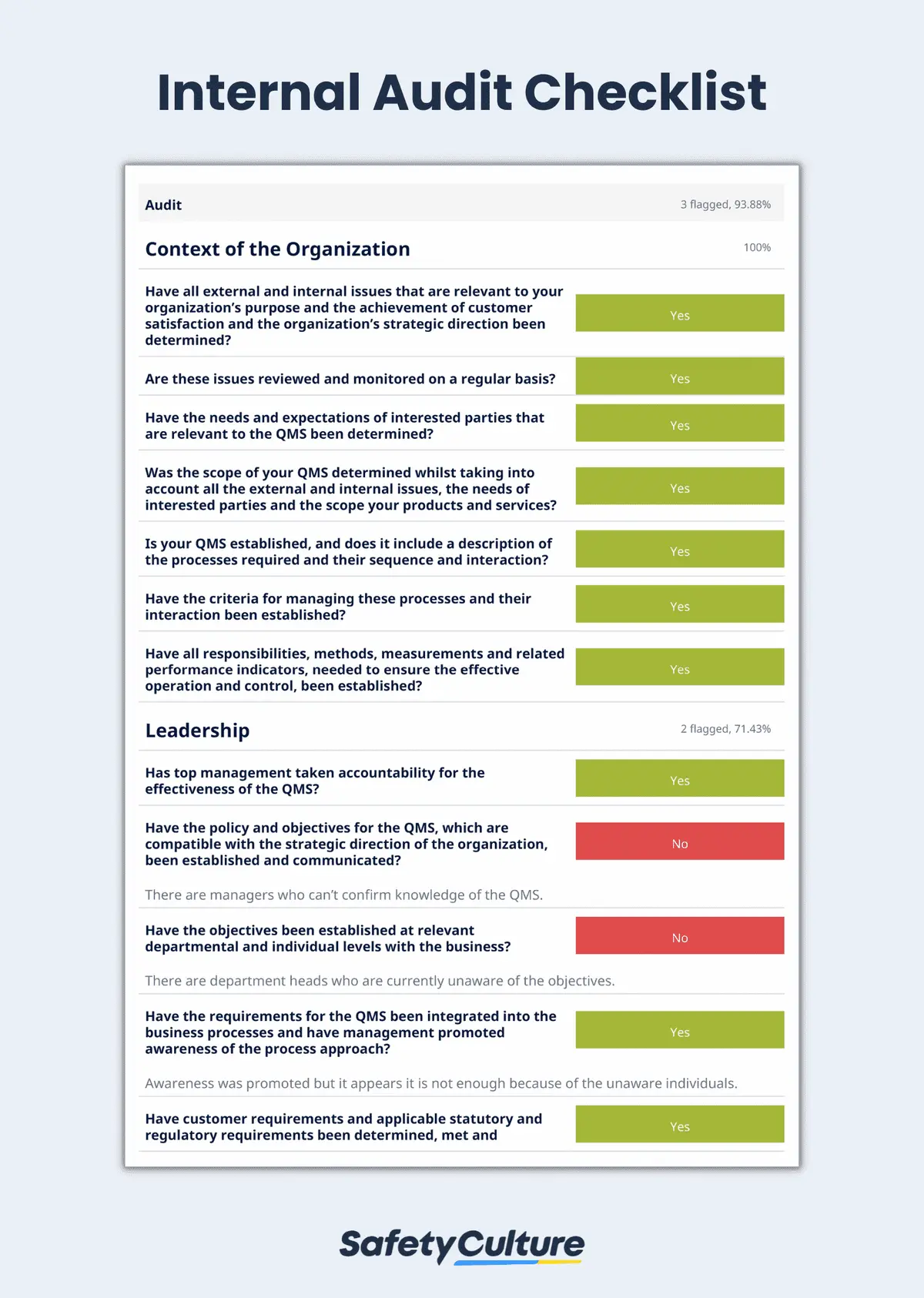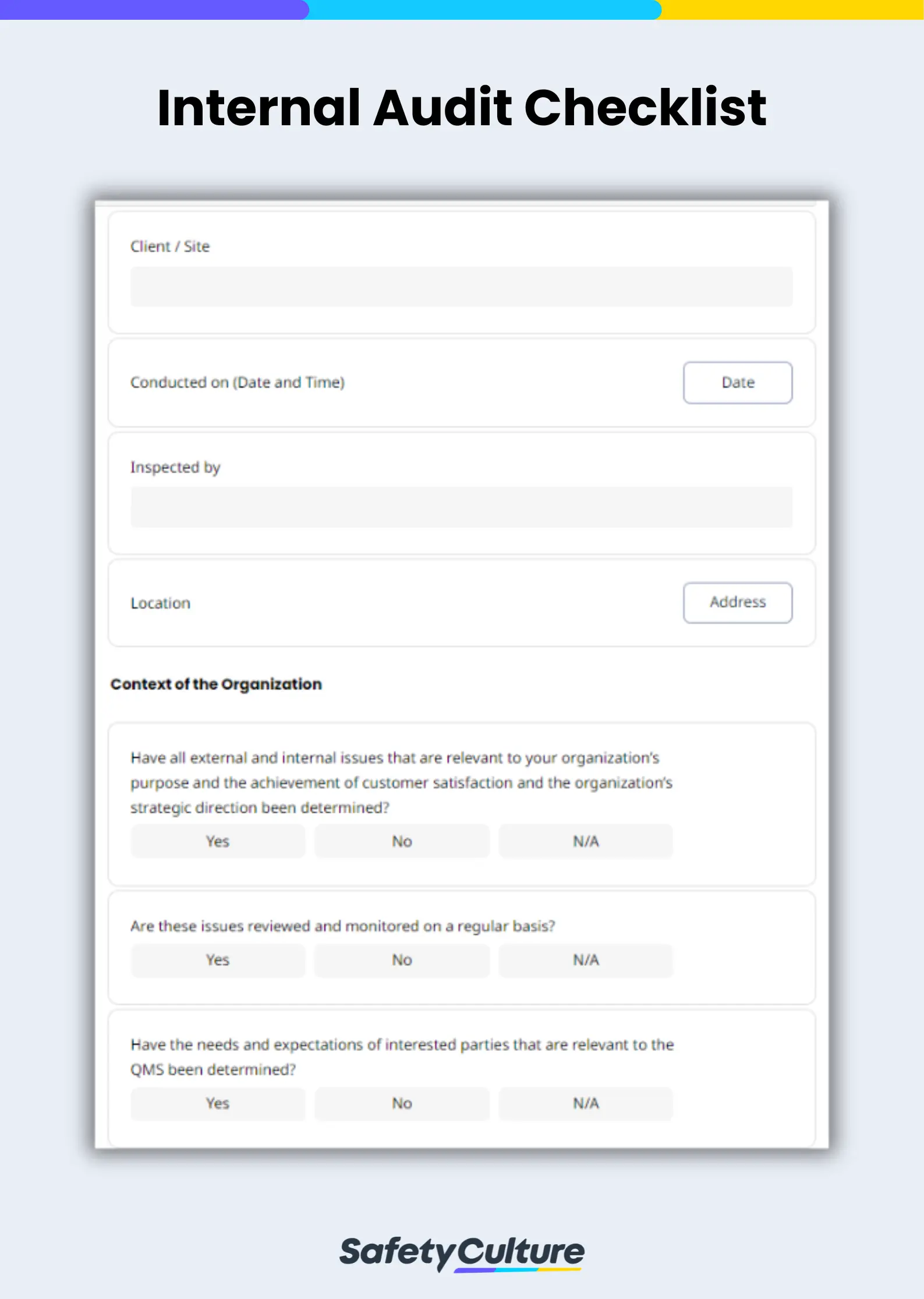What is an Internal Audit?
An internal audit is the process of evaluating the current performance of a company and providing recommendations to streamline corporate governance. It is also conducted to determine process gaps and whether or not the organization meets industry standards and regulations. Periodically conducted by the audit department or a cross-functional team, internal audits are designed to optimize business operations. Auditing the internal controls of a company helps mitigate risks across the enterprise and identify areas for improvement to reach set goals or objectives.
What is an Internal Audit Checklist?
An internal audit checklist is a tool used by internal auditors in manufacturing companies, the service sector, and multiple other industries to assess if an organization’s current performance and processes are consistently aligned with standards set by the company and the industry it belongs to. It is also used to determine if a company is operating in compliance with regulations. Meeting industry standards helps facilitate the ease of doing business with other institutions, while complying with regulations helps ensure continued business operation.
How to Conduct Internal Audits
Conducting internal audits involves preparation and engaging the right people. Below is a step-by-step guide on conducting internal audits:
- Know which standards are being followed by the organization, its current processes, and company goals. Determine what will be audited and who will be involved in the internal audit. Create the audit checklist form to be used for the internal audit based on this information.
- Assign the auditing task and set the schedule for the internal audit. Use audit software like SafetyCulture to help ensure that sufficient and crucial data are collected during the audit.
- Collect the reports and analyze the data gathered to determine the current status of the company.
- Prepare a plan of action on what needs to be done in order to address any concerns discovered during the audit. Use the information from the audit reports to formulate training programs for employee competencies or process improvement.
- Implement changes and continue conducting regular audits to track progress. Ensure that the audit checklist is up-to-date with changes in the organization or with industry standards to help facilitate continuous process improvement
What are the Contents of an Internal Audit Checklist Form?
Internal audit checklists can vary depending on the intended goal of the audit. This summarized sample content highlights the sections of an internal audit checklist based on the ISO 9001:2015 standard which is designed to assess the Quality Management System (QMS) of an organization.
- Context of the Organization
This section aims to know if the organization has identified internal and external issues that impact the organization and if performance indicators have been established. - Leadership
The leadership section intends to know if the organizational leadership’s roles and responsibilities have been identified for QMS. - Planning
This section checks if risks and opportunities are identified and if the organization has planned actions for them. - Support
The support section aims to establish if the organization has provided the resources (people, environment, and infrastructure) that will help achieve the intended QMS to be implemented. - Operation
The operation section intends to confirm if the organization has planned, implemented, and maintained processes that aim to meet the requirements for products and services. - Performance Evaluation
This section aims to determine if the organization has identified monitoring and performance evaluation protocols that ensure valid results. - Improvement
Important for ISO standards, this section intends to establish if the organization has continuous process improvement in place.
Another crucial feature of an internal audit and its checklist is that it is not static, it needs to adapt to changes and make sure that it aims to consistently align the organization with current standards.
Internal Audit Sample Report
Here’s a sample of a completed internal audit report in the format of a PDF:

FAQs About Internal Audit
Whether an independent, third-party, internal auditor from an auditing consultancy firm, or an employee tasked with conducting internal audits, an internal auditor is someone who, ideally, should be both an expert in the field being audited and trained to be impartial in conducting audit inspections. Internal audits should specifically inspect measurable and observable variables that impact or represent the level of quality, safety, and security of a company and its offered products and services.
Audit protocol is a set of guidelines that assist entities in conducting different types of audits for their businesses. It specifies the quality and degree of review for each audit and includes a list of requirements that must be met, observed, and evaluated in the audits.
Follow these steps to write a comprehensive audit report:
- Emphasize key findings to highlight audit relevance.
- Draw attention to details by using visuals and figures.
- End the findings summary on a positive note, if possible.
- Include the 5C’s of observation in every mentioned issue—Criteria, Condition, Cause, Consequence, and Corrective Action Plans.
- Conduct quality assurance reviews.


